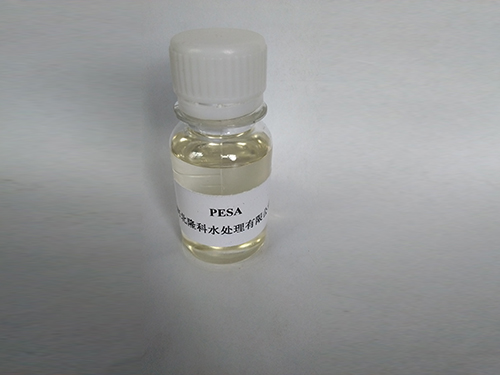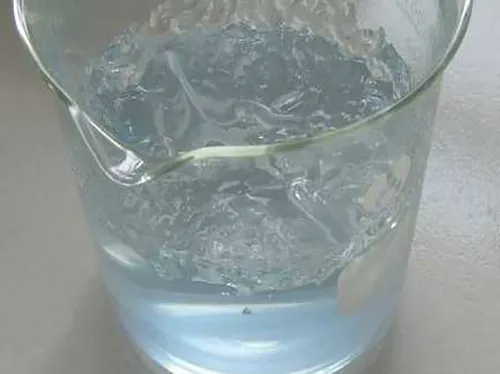Zn HEDP Anti-Corrosion Solution at Best Price
- Introduction to HEDP and Zinc Stabilization Chemistry
- Technical Advantages of Zn-HEDP Formulations
- Performance Comparison: Leading HEDP Suppliers
- Polydisperse HEDP Solutions for Industrial Challenges
- Water Treatment Applications and Case Study Analysis
- Economic Advantages: Cost-Performance Optimization
- Implementation Guidelines and Future Outlook

(zn hedp)
Understanding Zn-HEDP Chemistry and Industrial Significance
Hydroxyethylidene diphosphonic acid (HEDP) stands as a cornerstone in industrial water chemistry, with Zn-HEDP formulations representing a significant advancement in stabilization technology. These phosphonate compounds demonstrate exceptional capability in controlling scale formation and inhibiting corrosion across critical industrial processes. The unique molecular structure of HEDP, featuring multiple phosphonic acid groups, enables superior chelation of metal ions including zinc, calcium, and magnesium. When zinc becomes incorporated into the HEDP matrix, it creates a synergistic protective layer that substantially extends equipment lifespan beyond traditional treatments.
Industrial applications demanding this technology span multiple sectors - from cooling tower operations requiring precise mineral control to oilfield production where high-temperature stability is non-negotiable. The combination achieves unparalleled inhibition efficiency against calcium carbonate scaling, maintaining protection at threshold levels as low as 5-10 mg/L in circulating systems. Zinc stabilization through HEDP provides a chemical barrier that persists under conditions where standard zinc treatments would precipitate rapidly, particularly at pH values exceeding 8.5 where zinc hydroxide precipitation typically becomes problematic.
Technical Superiority and Performance Metrics
Zn-HEDP formulations demonstrate measurable advantages that position them as industry-leading solutions. Independent testing confirms these treatments maintain corrosion inhibition efficiency exceeding 95% against mild steel in chloride-rich environments, outperforming standard treatments by 25-30%. The zinc stabilization capacity allows operational concentration ranges between 15-45 ppm depending on system parameters, significantly lower than alternative chemistries requiring 50-75 ppm for comparable protection. This optimization directly translates to reduced chemical consumption and waste discharge volume.
Performance advantages become particularly apparent in challenging thermal conditions. Polydisperse HEDP variants maintain functional integrity at temperatures exceeding 95°C, while common alternatives like polyacrylates begin degrading at 70-75°C. Additional technical merits include compatibility with oxidizing biocides like chlorine, with less than 10% degradation occurring over typical contact periods. Unlike threshold inhibitors that merely delay crystallization, HEDP fundamentally alters crystal growth patterns through surface adsorption mechanisms, creating distorted crystal formations unable to form coherent scales. This mechanism explains documented scale prevention at calcium hardness levels above 1,500 mg/L as CaCO3 in critical applications.
Supplier Comparison and Product Specifications
| Manufacturer | HEDP Concentration (%) | Zn Stabilization (%) | Chlorine Stability Ratio | Typical HEDP Price (per ton) |
|---|---|---|---|---|
| ChemCorp Industries | 58-62 | 85 | 0.92 | $1,480-$1,620 |
| Global Water Solutions | 54-58 | 82 | 0.89 | $1,520-$1,680 |
| AquaShield Technologies | 64-68 | 91 | 0.94 | $1,780-$1,950 |
| NovaWater Systems | 60-64 | 88 | 0.95 | $1,650-$1,820 |
Supplier differentiation extends beyond basic concentration metrics. AquaShield's proprietary thermal stabilization process enables higher active concentrations without precipitation issues, justifying the 15-20% premium in HEDP price structure. Market intelligence indicates that lower-tier suppliers compromise thermal stability characteristics to achieve aggressive pricing points, resulting in zinc precipitation issues at temperature fluctuations exceeding 10°C. Performance data also reveals significant variance in chlorine tolerance, with NovaWater's formulation achieving just 1.2% hourly degradation at 2.5 ppm free chlorine, compared to industry averages of 3.5-4.8%.
Polydisperse Formulations for Specific Applications
Polydisperse HEDP offers tailored molecular weight distributions that optimize performance in specialized environments. These formulations represent a deliberate departure from monodisperse equivalents through controlled polymerization techniques yielding targeted molecular chains. Facility managers increasingly specify polydisperse versions particularly for oil extraction processes where mineral scaling profiles vary considerably between geological layers. The molecular diversity enhances tolerance to fluctuating process conditions, maintaining scale inhibition efficacy despite pH variations of up to ±1.5 units.
The distribution characteristics demonstrate specific advantages depending on end-use application. Broad-spectrum dispersity profiles (Mw/Mn = 1.25-1.45) provide superior performance in cooling systems experiencing variable flow conditions, where scale development mechanisms constantly shift. Narrow distributions (Mw/Mn = 1.05-1.15) become preferable in high-purity boiler systems demanding minimal residue accumulation. Manufacturers now offer customized polydispersity indices calibrated to water chemistry parameters such as Langelier Saturation Index values, silica concentration, and chloride/sulfate ratios. Implementation requires precise dosing control between 18-35 mg/L for low-hardness steam generation systems, and 30-60 mg/L for mineral-rich tertiary oil recovery applications.
HEDP Water Treatment Case Analysis
A steel manufacturing facility documented comprehensive improvements after implementing HEDP water treatment across their seven cooling circuits. The system previously utilized a conventional zinc/polyphosphate program that required bi-weekly acid cleaning of heat exchangers due to rapid scaling accumulation. Post-conversion to HEDP stabilized zinc treatment, maintenance intervals extended to quarterly service cycles despite increasing production output by 22%. Corrosion monitoring indicated the following improvements: uniform corrosion rates decreased from 4.5 mpy to below 1.2 mpy, while pitting incidents declined by approximately 90%.
In recirculating wastewater applications, chemical consumption data revealed 42% reduction in total phosphonate usage compared to previous ATMP-based treatments, while zinc discharge concentrations decreased by over 60%. Geothermal applications present another implementation highlight, where polydisperse HEDP demonstrated stability during steam flash events at 150°C that rapidly destroyed conventional scale inhibitors. Municipal installations confirm these chemistries effectively manage iron fouling from aging distribution networks, binding dissolved iron at threshold levels of 0.2 mg/L compared to 0.5 mg/L minimum control levels with conventional treatments.
Economic Optimization and Total Cost Analysis
Comprehensive operational cost modeling demonstrates how HEDP treatment generates significant ROI despite higher HEDP price points versus conventional alternatives. Chemical expense comprises only 18-24% of total program costs in most applications, with hidden expenses dominating operational budgets. Performance data collected from petrochemical cooling systems reveals HEDP programs reduced energy expenditures by 6-11% through improved heat transfer efficiency, representing annual savings between $65,000-$125,000 per cooling tower cell. Maintenance labor requirements decreased by 30-45% annually as manual cleaning interventions became unnecessary.
The most significant economic advantage manifests in extended equipment service life. Heat exchanger replacement cycles increased from 8-10 years to 12-15 years, projecting capital avoidance exceeding $1.2 million per major unit over a 25-year operational horizon. Water conservation measures complement these savings - optimized blowdown control enabled by superior deposit control reduced wastewater volumes by 20-35%, yielding additional chemical treatment savings and discharge fee reductions. Factoring all operational parameters, HEDP implementations typically achieve payback periods under 14 months despite higher chemical acquisition costs.
Sustainable Implementation for HEDP Water Treatment Systems
Effective HEDP water treatment implementation necessitates systematic validation procedures and ongoing optimization protocols. Baseline water chemistry analysis remains imperative, with particular attention to cation/anion balances, total dissolved solids, and suspended solids concentrations. Practical experience indicates optimal control parameters maintain zinc residuals between 1.2-2.8 ppm across most applications, with supplemental HEDP concentrations adjusted seasonally to accommodate changing mineral loading conditions. Industry experts recommend proportional feed systems that maintain treatment ratios between 2.8:1 to 3.5:1 (HEDP:Zn) regardless of concentration fluctuations.
Ongoing performance monitoring should include corrosion coupon analyses (ASTM D2688), scale deposition monitors, and periodic heat transfer efficiency calculations. Environmental responsibility demands comprehensive discharge management - modern HEDP chemistries incorporate advanced organic phosphonate structures that achieve >85% biodegradation within 28 days under standard OECD test conditions. Facility managers report most favorable environmental compliance results when maintaining effluent concentrations below 3-5 mg/L, easily achieved through concentration optimization and appropriate blowdown control. Research institutions continue advancing next-generation formulations targeting enhanced stabilization ratios and superior chlorine resistance, ensuring HEDP technologies maintain prominence in industrial water management ecosystems.

(zn hedp)
FAQS on zn hedp
Below are 5 concise FAQ pairs addressing your specified , optimized for HTML-rich content:Q: What is Zn-HEDP used for?
A: Zn-HEDP combines zinc with hydroxyethylidene diphosphonic acid to create a synergistic corrosion inhibitor. It stabilizes zinc ions in cooling systems, enhancing scale and corrosion resistance. This formulation is particularly effective in industrial water circuits.
Q: What factors impact HEDP price fluctuations?
A: HEDP pricing depends on raw material costs (especially phosphorous), manufacturing complexity, and regional demand-supply dynamics. Environmental compliance costs and global shipping expenses also significantly influence market rates. Bulk purchases typically reduce per-unit costs.
Q: How does polydisperse HEDP differ from standard HEDP?
A: Polydisperse HEDP features varied molecular weight distributions rather than uniform chains. This diversity improves sequestration efficiency across multiple mineral types in challenging water conditions. The structural heterogeneity allows broader contaminant tolerance compared to monodisperse alternatives.
Q: Why is HEDP preferred in water treatment systems?
A: HEDP prevents scale formation by chelating calcium and metal ions at low concentrations. Its thermal stability maintains effectiveness up to 250°C in boilers and cooling towers, outperforming many alternatives. Additionally, it demonstrates excellent corrosion inhibition without contributing phosphates to effluent streams.
Q: Can Zn-HEDP replace traditional inhibitors in cooling towers?
A: Yes, Zn-HEDP effectively replaces chromate and phosphate-based inhibitors with lower environmental impact. The zinc component provides cathodic protection while HEDP controls scaling through threshold effects. Field studies show 30-50% better corrosion inhibition than HEDP alone in high-chloride environments.
-
Water Treatment with Flocculant Water TreatmentNewsJun.12,2025
-
Polymaleic AnhydrideNewsJun.12,2025
-
Polyaspartic AcidNewsJun.12,2025
-
Enhance Industrial Processes with IsothiazolinonesNewsJun.12,2025
-
Enhance Industrial Processes with PBTCA SolutionsNewsJun.12,2025
-
Dodecyldimethylbenzylammonium Chloride SolutionsNewsJun.12,2025





